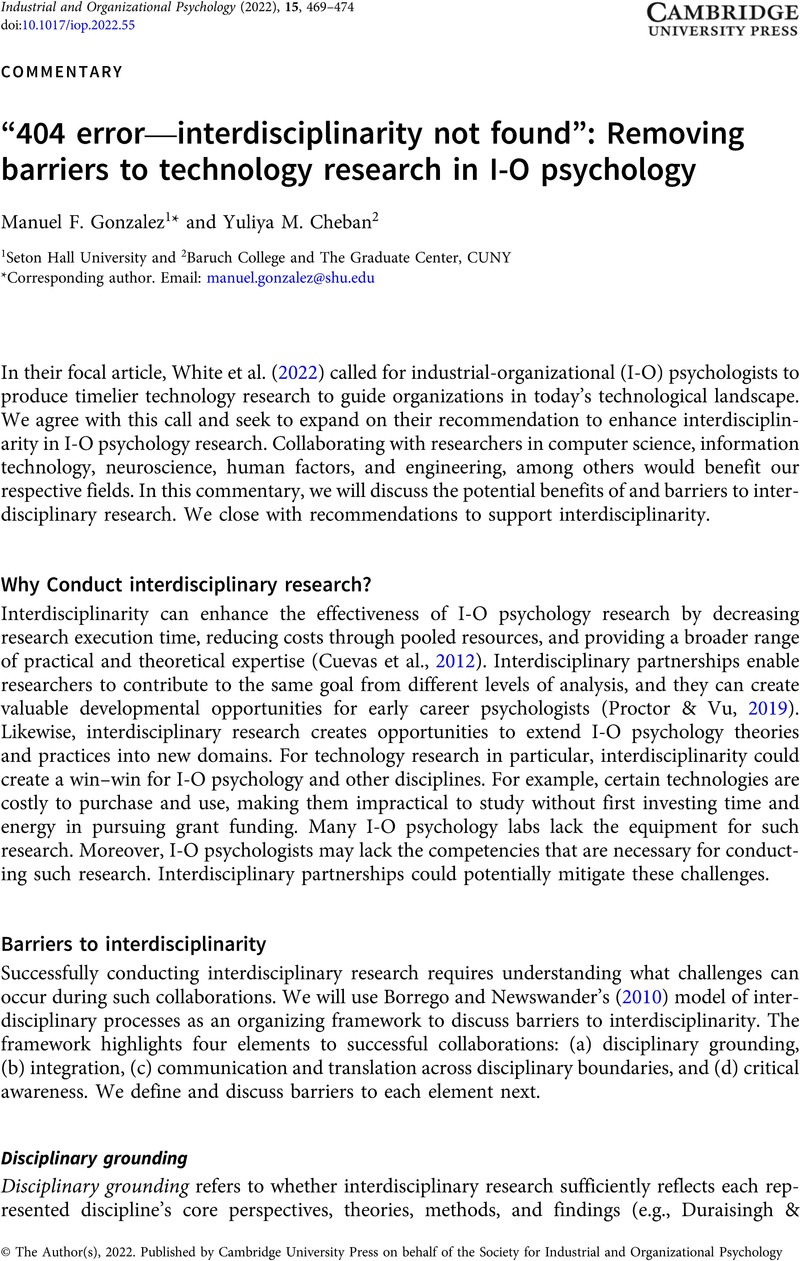White, J.,
Ravid, D.,
Siderits, I., &
Behrend, T. S. (
2022). An urgent call for I-O psychologists to produce timelier technology research. Industrial Organizational Psychology: Perspectives on Science and Practice, 15(3), 441–459.
CrossRefGoogle Scholar 